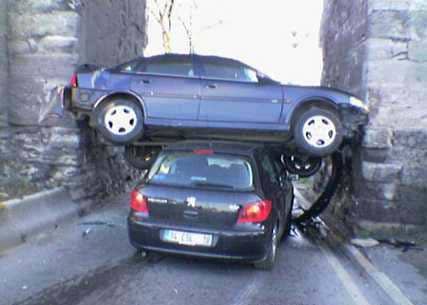by California Casualty | Nominate a Hero |

In 2000, Dustin realized he wanted to work in law enforcement, and soon after, he started with the Shasta County Sheriff’s office. He put in his time working with the local jail, and soon made it to patrol.
In October 2010, Mrs. Reynolds received the call no police wife wants: “You need to come to the hospital, there has been an accident.” Dustin was in the hospital receiving 28 staples in his head from a harrowing altercation.
Now that he has recovered, Dustin makes a strong impact on his community. He works as a Detective for the Shasta County Coroner’s Office, and is noted for his ability to offer comfort for other families during tough times in their lives.
Dustin continues to do presentations at local schools, showing children what life is like in law enforcement. He is also very active in coaching youth football.
by California Casualty | Firefighters, Health, Peace Officers |
As the first people on the scene during accidents, emergencies, and crimes, first responders are susceptible to experiencing strong emotional and physical reactions to stress. From sadness and fear to anxiety and anger, stressful emotions experienced on the clock are easily taken home at the end of your shift. Without an ongoing commitment to living a healthy, stress-reducing lifestyle, debilitating disorders, like chronic depression and PTSD, can emerge. Whether you’re an EMT, firefighter or police officer it’s important to take proactive measures to protect yourself from the destruction stress can cause.
Stress Management Isn’t Just Important – It’s Urgent!
The combination of mental and physical effects of stress can become unbearable, particularly for first responders who need to remain focused and clear-headed at work. Compared to other professionals, first responders are often last to seek help for work-related stress. According to the International Journal of Emergency Mental Health, first responders experience extreme discrimination from peers, including derogatory remarks, labelling, and loss of social status, when attempting to seek help. To effectively manage stress as a first responder, the first step is to learn about the two basic forms of stress you are likely to experience: stress during an incident and stress after an incident
Underestimating the duration of stress and its effects on mental and physical health is one of the biggest mistakes made by emergency personnel. Before you can begin to manage stress, it’s necessary to understand what stress looks like during and after a traumatic event. Emergency medical professionals, firefighters and police officers experience the following:
- Stress during an incident. Between denial, sorrow, fear, and numbness, many feelings can overwhelm you during an incident. Increased irritability, inability to concentrate, and irrational thoughts, are psychological signs of stress taking hold. Physically, stress may induce rapid heart rate, nausea, and shortness of breath.
- Stress after an incident. After experiencing a traumatic event, many first responders report an inability to sleep well, recurring nightmares, distractibility, and an inability to regulate emotions. Family conflicts, isolation, and chronic mental or physical disorders can occur as a result of unmanaged stress.
Learning to recognize the symptoms and consequences of stress is the first step in stress management. The next step is to learn to reduce stress.
8 Tips to Help First Responders Reduce Stress

Both on and off the job, you have the power of choice. Choose to stay at the top of your game by engaging in these 8 stress-reducing activities:
- Take time off when needed. Regardless of their role, first responders are an exceptional group of individuals committed to helping others and preserving safety. This dedication, while admirable, can quickly lead to a feeling of being overworked and highly stressed. After a particularly traumatic incident on the job, take time off to regroup and reinvest in yourself.
- Find a hobby. Essential for personal development, hobbies are a safe, healthy, and fun way to shift focus away from stressors and toward relaxation. From gardening or playing cards to painting or joining a club, participating in activities outside the workplace adds balance and serenity to your life.
- Exercise regularly. Keep up with the physical demands of your profession while maintaining a healthy weight by exercising regularly. Research indicates that exercise increases the body’s level of endorphins, resulting in improved mood, decreased irritability, and an enhanced ability to concentrate. Choose a fun fitness routine, like boxing or group classes, to remain motivated to exercise.
- Eat healthy foods. Expecting an uninterrupted lunch break as a first responder may seem farfetched, but that isn’t an excuse to load up on carbs, fat, sugar, and salt. In addition to negatively affecting your overall health, consuming unhealthy, processed, or fast foods can lead to increased irritability, low energy, and poor concentration. Instead, drink plenty of water and eat balanced meals that include whole grains, lean protein, and vegetables.
- Practice meditation or yoga. To battle the effects of stress, engage in meditation or stress-relieving exercises, like yoga. By combining stretches, breathing exercises, and bodily poses, yoga helps relieve anxiety, depression, and stress. Meditation alone is shown to help alleviate feelings of anxiety and depression, as well as reduce pain. According to the National Center for Complementary and Alternative Medicine, meditation is a technique used by nearly 10% of adults in the U.S.
- Start a journal. Communicating your thoughts and feelings is crucial to overcoming the experience of trauma. Even if you’re not ready to speak with a counselor, keeping a journal about your experiences allows self-expression without threat of discrimination. Simply writing to yourself will not only help get certain events off your mind, but will also enhance your communication skills.
- Seek counseling. Individual counseling can work wonders for first responders, even if they have not recently experienced trauma. By actively participating in counseling, emergency professionals receive a source of ongoing emotional support while working to manage stress. Working with a therapist to establish and maintain a healthy lifestyle increases your ability to appropriately cope with stress.
- Attend a support group. Participation in social events in a supportive setting is crucial for first responders, as it helps form bonds between those recovering from work-related trauma. Meeting with others who have experienced similar events is both an affirming and reassuring activity. After joining support groups, first responders are able to expand their social networks, focus on healthy relationships, and overcome work-related trauma.
Taking one or more of the above steps will help relieve stress now and in the future. With first responders considered high risk for PTSD and depression, investing in your physical and mental health now is important for ensuring you have an enjoyable future.
The biggest obstacle to getting help is feeling confident when asking for help that the help is confidential. Here is a list of resources. Some are specific to Fire/EMS; some are specific to Law Enforcement. All are resources for confidential help.
American Foundation for Suicide Prevention – Resource for understanding warning signs of suicide and how to get help for yourself or someone else.
Centers for Disease Control and Prevention – Resources for individuals affected by a disaster – including first responders.
National Center for PTSD – Good resource for anyone who has experienced trauma.
National Institute of Mental Health – Good resource for a wide variety of mental health information.
National Suicide Prevention Lifeline – This is a hotline for anyone in crisis or to get help form someone in crisis. You do not need to be suicidal to call this line. They are there to listen and provide resources without judging. Afraid to call? Use the chat function from a computer or mobile device. Either way, you can remain anonymous!
Sites Specific to Fire/EMS:
All Hands Working – Organization dedicated to providing help to firefighters on and off duty.
Firefighter Behavioral Health Alliance – Non-profit organization developed to help educate firefighters and EMS about mental health on the job.
Helping Heroes – List of behavioral health resources specific to firefighters from National Fallen Firefighters Foundation.
Share the Load Support Program for Fire and EMS – Focusing on the mental well-being of firefighters and EMS.
Sites Specific to Law Enforcement:
Badge of Life – Site is specific to law enforcement and suicide prevention.
CopsAlive.com – Information, strategies and tools to help cops plan for happy, healthy and successful careers, relationships and lives.
Tears of a Cop – Site dedicated to stopping officer suicide and providing resources for PTSD.
Asking for help is the hardest thing to do! Sometimes even “heroes” need help. Please reach out if you or someone you know is struggling.
This article is furnished by California Casualty, providing auto and home insurance to educators, law enforcement officers, firefighters and nurses. Get a quote at 1.800.800.9410 or www.calcas.com.
by California Casualty | Nominate a Hero |
How to Vote for Dustin
Voting is now closed. Congrats to Dustin for being Hero of the Month! Stay tuned for next month’s finalists.
Be sure to read all our heroes’ stories here.

In 2000, Dustin realized he wanted to work in law enforcement, and soon after, he started with the Shasta County Sheriff’s office. He put in his time working with the local jail, and soon made it to patrol.
In October 2010, Mrs. Reynolds received the call no police wife wants: “You need to come to the hospital, there has been an accident.” Dustin was in the hospital receiving 28 staples in his head from a harrowing altercation.
Now that he has recovered, Dustin makes a strong impact on his community. He works as a Detective for the Shasta County Coroner’s Office, and is noted for his ability to offer comfort for other families during tough times in their lives.
Dustin continues to do presentations at local schools, showing children what life is like in law enforcement. He is also very active in coaching youth football.
by California Casualty | Nominate a Hero |
How to Vote for Maria
Voting is now closed. Stay tuned for next month’s finalists.
Be sure to read all our heroes’ stories here.

Every day Maria teaches is a great success.
After a terrible accident, doctors believed Maria would never walk, talk, or teach again. Maria had other plans, and that diagnosis was not going to keep her from her passion.
Overcoming the odds, Maria is now the Head of the English Department and the Faculty Advisory Committee.

by California Casualty | Auto Insurance Info |
There could be a big liability problem with the growing trend of “Ride-Sharing.”
The Property Casualty Insurers Association of America (PCI) reminds people that personal auto insurance policies will not provide coverage if a car is used in a ride-sharing program, otherwise known as transportation network companies (TNCs).
NBC Today reports that thirteen states and the District of Columbia are issuing warnings to passengers that they may not be covered by insurance if a hired ride-sharing driver has an accident. The report also talks to two men stuck with medical bills after a crash in a ride-sharing vehicle.
Ride-sharing is a new transportation trend in major cities around the country where a company uses a smartphone app to connect drivers with people needing a ride for a fee as part of an organized program. “Insurers support innovative ideas, however the drivers and passengers that ride in these cars must know where they stand regarding insurance coverage, said Kelly Campbell, PCI vice president. “Personal auto insurance policies are not intended for commercial activities and contain a specific ‘livery’ exclusion which bars coverage if the car is used to transport passengers for a fee. These exclusions have been upheld in the courts for decades.”
In other words, there may be a coverage gap, especially if the driver is involved in a serious crash while working as a TNC employee. Commercial ride-sharing operators need commercial insurance coverage to protect their vehicle, pay for any injuries they sustain and to cover loss of income from an accident.
While a person’s medical and auto insurance might follow them if they use ride-sharing, the driver’s insurance may not pay their medical bills following a crash.
Consumer Reports wrote a recent article warning drivers about the issues incurred with being a part-time taxi driver.
Make sure your auto and home coverage is up-to-date, contact a California Casualty advisor at 1.866-552-3278 or go to www.calcas.com.
California Casualty, provides auto and home insurance to teachers, law enforcement officers, firefighters and nurses. Get a quote at 1.866-552-3278 or www.calcas.com.




